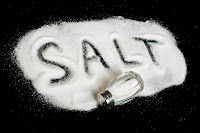Debunked Again "Steak Resting At Room Temperature Before Cooking"
 I cannot believe that Cookbooks, Chefs, and people are still suggesting that we let a steak rest at room temperature before cooking. Many famous Chefs recommend a steak come to room temp before cooking. One would think they would know better. I would name them all here, but that would take up a whole page. Personally, I don't care if you use this method, but dogmatizing is something else entirely. Making promises of grandeur and indirectly diminishing traditional methods is where I draw the line. This just came up again in at least 2-Food-Groups I Admin.
I cannot believe that Cookbooks, Chefs, and people are still suggesting that we let a steak rest at room temperature before cooking. Many famous Chefs recommend a steak come to room temp before cooking. One would think they would know better. I would name them all here, but that would take up a whole page. Personally, I don't care if you use this method, but dogmatizing is something else entirely. Making promises of grandeur and indirectly diminishing traditional methods is where I draw the line. This just came up again in at least 2-Food-Groups I Admin.  This practice is likened to people believing searing meat can create a thick enough crust lock-in meat juices. Serious Eats, Serious Eats 7 Myths, Amazing Ribs and American Test Kitchen have already debunked this folktale, but I felt a postscript was in need. Specificity is my forte, and I am hoping I can convince the antagonists with real-data to hopefully revise their methods. I could give you a rant about the why's, how's, who, what, but I would be replicating the great work of Serious Eats and Amazing Ribs, and it's just not needed here.
This practice is likened to people believing searing meat can create a thick enough crust lock-in meat juices. Serious Eats, Serious Eats 7 Myths, Amazing Ribs and American Test Kitchen have already debunked this folktale, but I felt a postscript was in need. Specificity is my forte, and I am hoping I can convince the antagonists with real-data to hopefully revise their methods. I could give you a rant about the why's, how's, who, what, but I would be replicating the great work of Serious Eats and Amazing Ribs, and it's just not needed here. However, I will give you a couple of reasons why people suggest using this method, but I encourage you all to click on the links above. Some believe that letting a steak come to room temp or letting it rest and come up a few degrees before cooking will enhance browning and promote even cooking. I can sum up this belief with one word..."Hogwash".
Do you want to assure even cooking from edge to center? Sous-Vide the steak or do a reverse sear. Do you want better browning or a better crust? Make sure the surface is very, very dry. For Sous-Vide steaks, I will sometimes, after drying, place them on a raised trivet with a small fan blowing across the surfaces. With traditional cooking, the steaks will sit on a trivet uncovered in the refrigerator for a few hours to dry the surface.
I am using three NY-Strips for this demonstration. The thickness of all three steaks is 27.3 mm. Note-1: 25.4 mm = 1-Inch. Note-2: The thickness of the steaks ranged from 26.9mm - 27.4mm. 27.3 seemed to be the average when I used the caliper.

I used an electronic Caliper to measure the thickness of the steaks.
 |
| Click to enlarge and sharpen. |
The thicknesses I chose for these steaks were not accidental. I've conducted anecdotal tests with 1.5-inch steaks and 2-inch steaks, and the times needed to increase internal temp equal to the ones in the charts were exponential. I decided to use a 1-inch steak to show you that even the thinnest of steaks would prove to be pointless.
Let's look at the Second Steak that rested at room temp (70.3f) for 120-minutes. At the 2-Hour mark, the internal temp only reached 63f. But looking at the Sous-Vide-Processed Steak at the 00:10:15, the internal temp reached room temp (70.3f).
The Black box under the data says it all. As the temp climbs or approaches the target temp (Room Temp, Bath Temp, or even Ice-bath), the ascending temp will slow down to a crawl. The thicker the protein, the slower it will climb. I have data that supports this too. Depending on the thickness achieving that last 1 degree can take upwards of 1-3 hours. What's my point? Autolysis will most likely set in before protein reaches room temp.

In the end, I don't care if you use this method, but please don't suggest that people have to do this to get a great steak. Preaching absolutism in food groups, in general, is just bad eats.





Comments
Post a Comment